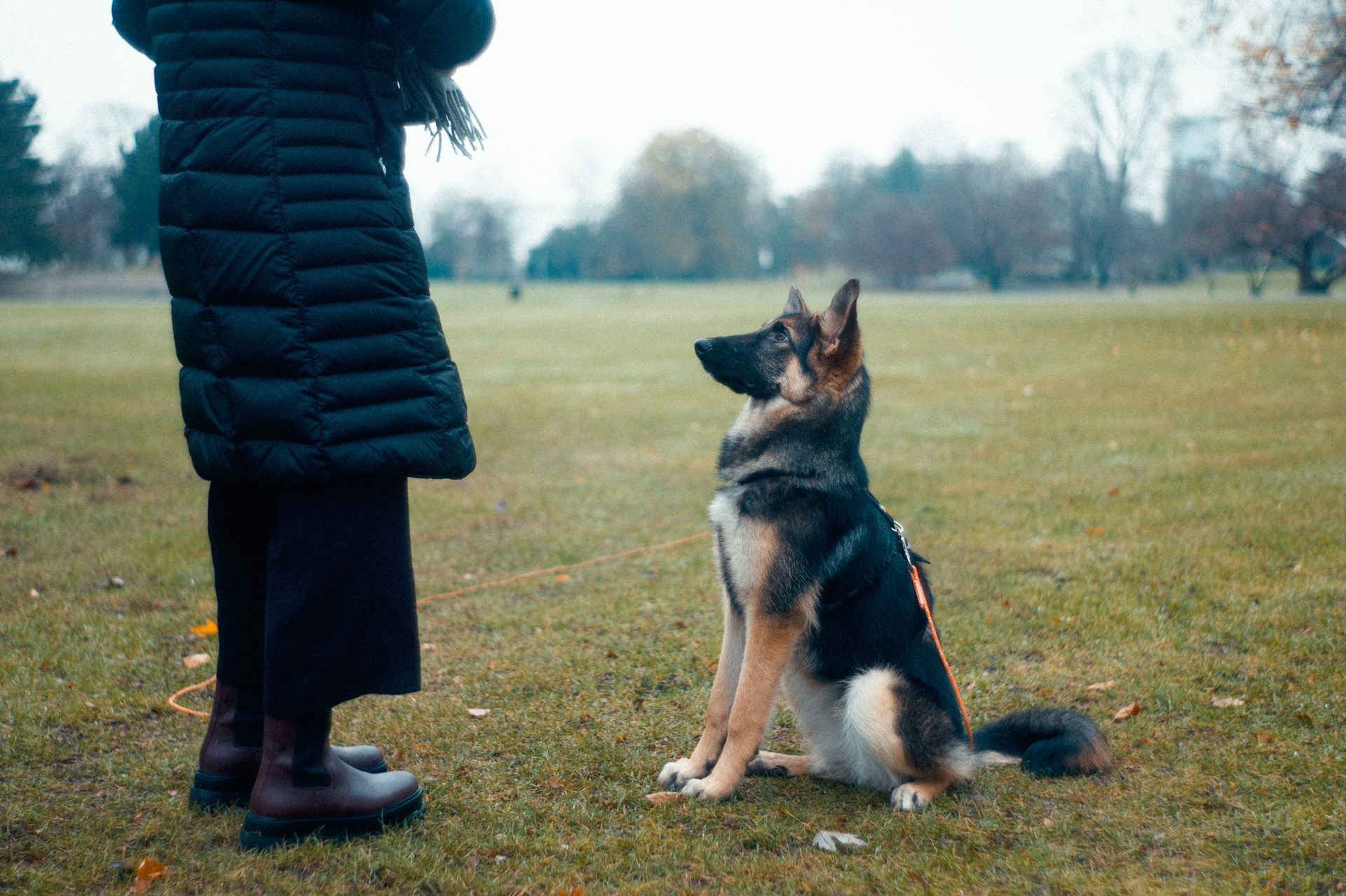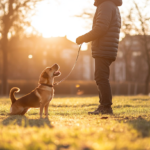14-Day Dog Training Plan for Beginners
Got a new dog and absolutely zero clue what you’re doing? Welcome to the club. Whether you’ve adopted a bouncy puppy or a grown dog with a mysterious past and a talent for ignoring you, training can feel like a lot.
But here’s the good news: you don’t need to be a pro or have a degree in “Dog Whispering” to train your pup. You just need consistency, a bit of patience, and lots of treats. Like, a ridiculous amount of treats.
Let’s break it down—14 days, simple steps, and no fancy jargon.
Day 1–2: Name Recognition & Eye Contact
Before you even think about sit, stay, or stop-eating-my-shoes, your dog needs to know their name means something.
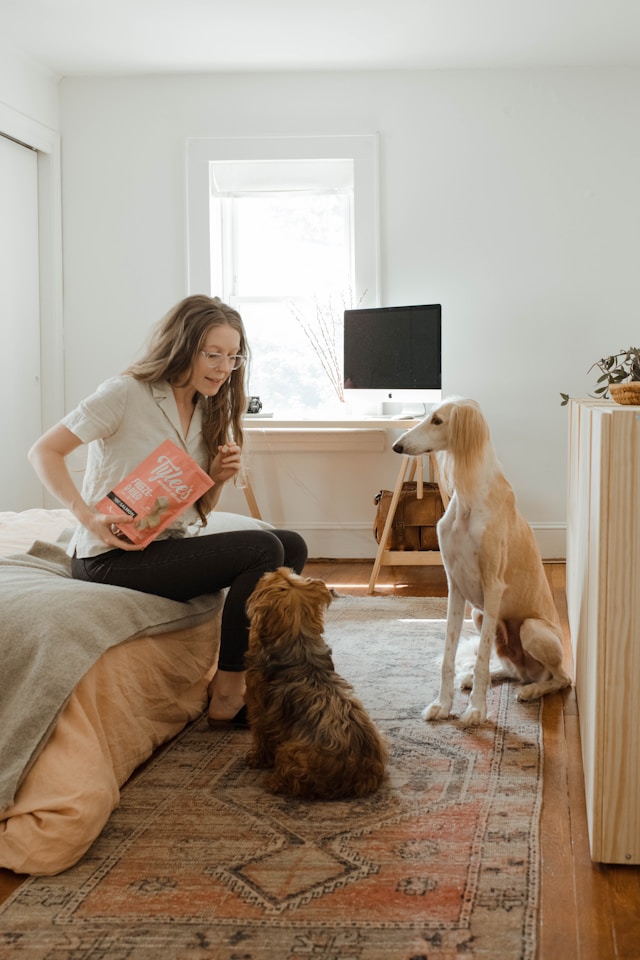
What You’re Teaching:
- “Hey, when I say your name, look at me, not the squirrel.”
- Eye contact = good stuff.
How to Do It:
- Say your dog’s name in a happy tone.
- The second they look at you, reward them like they just solved world peace (treats, praise, maybe even a party hat).
- Repeat 5–10 times randomly throughout the day.
Pro tip: Don’t say their name in a grumpy tone when they’re doing something naughty, or they’ll start associating it with trouble. We want name = jackpot, not name = lecture.
🍲 50 Printable Dog Food Recipes Your Pup Will Love
Skip the fillers and preservatives. Make healthy, homemade meals your dog will actually eat — using everyday ingredients you already trust. Vet-friendly, budget-friendly, and super easy to follow. 🐾
Perfect for picky eaters, senior dogs, and pups with sensitive stomachs. Make mealtime simple and nutritious again.
Get the Recipes Now 🐶Day 3–4: Sit Happens (Literally)
Time to teach the classic: sit. Because every polite dog starts here.
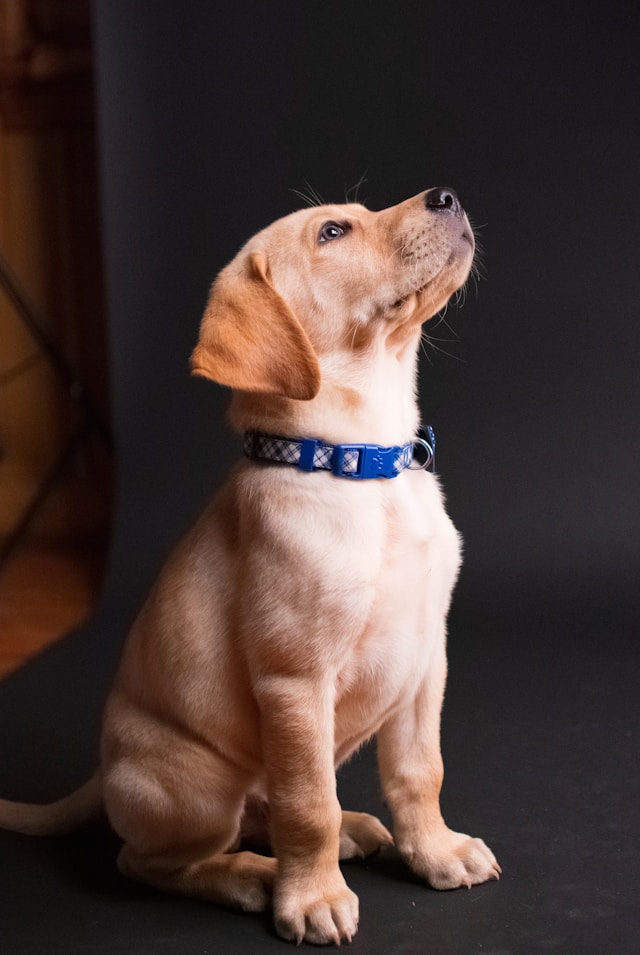
Why Bother?
Because “sit” is like the universal pause button. Overexcited? Sit. About to jump on Grandma? Sit. Thinking of launching off the couch like a missile? Yep—sit.
How To Train:
- Hold a treat close to their nose.
- Move your hand up slowly. As their head follows, their butt naturally goes down.
- The second the booty hits the floor: mark it (“yes!” or click) and treat.
- Don’t push their butt down. That’s cheating, and dogs are not furniture.
Day 5–6: Down (Nope, Not the Sad Kind)
“Down” means belly to the ground. Great for calming a hyper pup and keeping them chill during meals, visitors, or your 3rd Zoom call of the day.

The Trick:
- Start with your dog in a sit.
- Take a treat, move it slowly from their nose to the floor, then out along the ground.
- Most dogs will follow and slide into a down.
- The moment they hit the floor—praise and treat like you’re Oprah handing out cars.
If they keep standing, slow your hand down. Some dogs need to think about it. Hard.
Day 7: Stay (Yes, Even With Pizza Around)
Okay, now we’re cooking. “Stay” is a lifesaver, especially when your dog’s default mode is “chaotic tornado.”
Teach It Like This:
- Ask for a sit or down.
- Hold your hand up like a stop sign and say “stay.”
- Take one small step back. If they don’t move, return and reward.
- Increase distance slowly—like, painfully slow. One step, two steps… not fifty. This ain’t a sprint.

FYI: Break it into short, success-packed sessions. Don’t test their patience right away. Or yours.
Day 8: Come (aka “Put Down That Dead Bird and Get Over Here”)
Recall is one of the most important commands ever. And yes, they’ll pretend they didn’t hear you if they think something better is happening. (Spoiler: It always is.)
Build a Rock-Solid “Come”:
- Start in a quiet space.
- Say “come!” in your happiest voice—yes, even if you sound ridiculous.
- When they get to you, throw a party. High-value treats only. (Chicken, cheese, or whatever makes them drool.)
Practice this game in different rooms, then slowly move outdoors with a leash or long lead. Gradually add distractions later.
Day 9–10: Loose Leash Walking (Not “Drag Me Across Town” Mode)
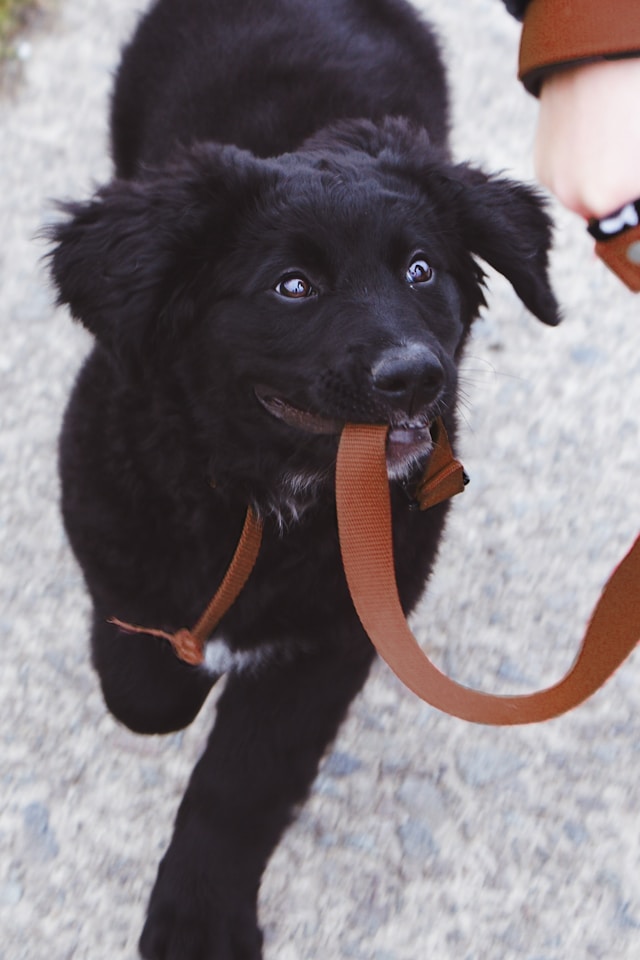
This one takes a lot of practice, and honestly? It might test your soul. But it’s worth it.
Reality Check:
Dogs don’t come pre-programmed to walk politely. If you let them pull you like a sled dog, they’ll keep doing it. Simple.
Training Tips:
- Start walking. The second they pull? Stop.
- Wait. Call them back to you.
- Only walk forward when the leash is loose.
- Yes, it’s annoying. Yes, people will stare. But consistency wins.
Optional drama: Turn into a statue when they pull. They’ll eventually learn that pulling = no progress. Freedom comes with manners.
Day 11–12: Leave It (a.k.a. “Don’t Eat That Gross Thing”)
If your dog has ever tried to munch on gum from the sidewalk or “mystery poop,” you need this command.
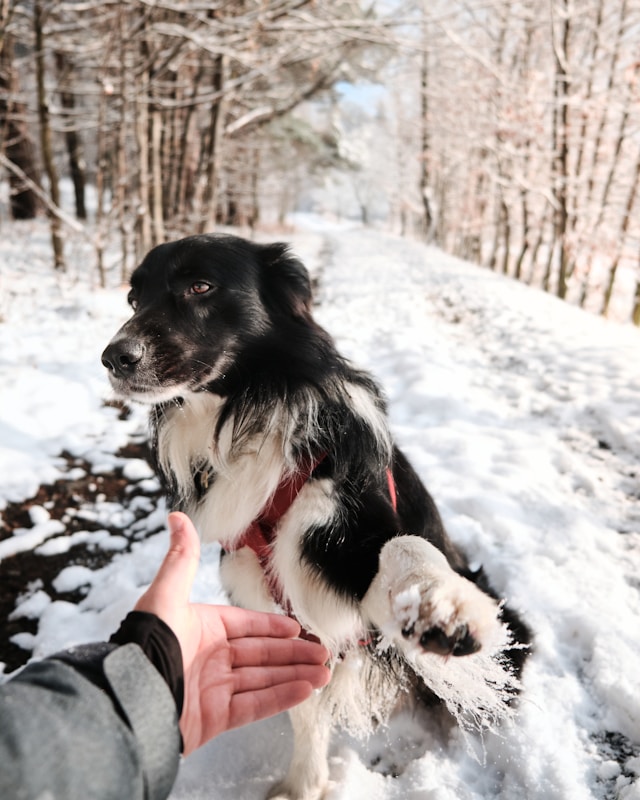
How to Teach It:
- Put a treat in both hands.
- Show the closed fist with the treat. Say “leave it.”
- Let them sniff, lick, even paw. Don’t open your hand.
- Once they give up and look away? Reward them with the treat from the other hand.
This shows them: ignoring temptation = better reward. Like magic.
Day 13: Wait (Patience, Grasshopper)
Unlike “stay,” which means “don’t move at all,” “wait” means “pause for a sec until I say go.”
Why Teach This?
Think doors, car rides, food bowls, or when you don’t want your dog to bolt like a caffeinated squirrel.
Quick Steps:
- Put their food bowl down.
- Say “wait.”
- If they move toward it, lift the bowl.
- Repeat until they pause. Then say “okay!” and let them eat.
You can use this with doors, too. It teaches self-control, which—let’s be honest—is not most dogs’ strong suit.
Day 14: Put It All Together (aka “I Trained My Dog and Didn’t Cry”)
You made it. Two weeks. And look at you—you’ve got a dog who actually listens (sometimes). Don’t expect perfection, but expect progress.
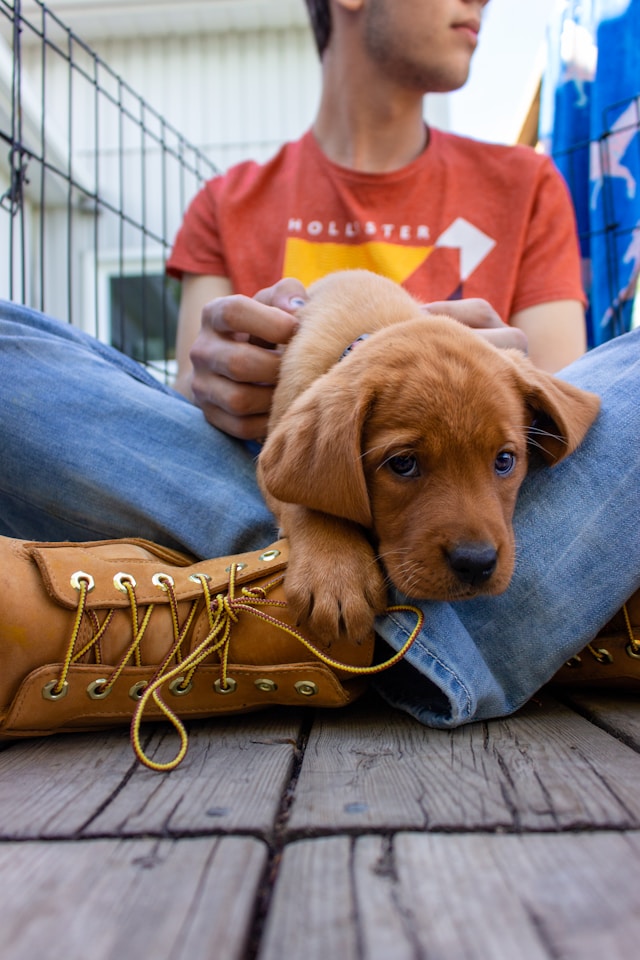
Combine Commands:
- Sit + Stay at the door
- Come + Down at the park
- Leave it + Wait near food
Mix them up. Keep sessions short. End on a win. Always reward effort.
BTW: Dogs love variety. If training gets boring, they check out. (Relatable, right?)
Extra Tips to Keep You (and Your Dog) Sane
🍖 Use High-Value Treats
Dry kibble is fine for basic stuff, but if you’re dealing with distractions (aka squirrels, loud trucks, or pizza crusts), bring out the big guns: chicken, cheese, hot dogs—whatever works.
⏱ Keep Sessions Short
5–10 minutes max. Think of it like speed dating—short and effective. Don’t drill your dog for 30 minutes straight unless you want them to hate training.
🙃 Don’t Train When You’re Cranky
Seriously. Your dog feels your energy. If you’re annoyed, tired, or hangry? Skip it. Training while salty never ends well.
🧠 End on a High Note
Even if your dog fails miserably, finish with something they can do well. End with success and treat the heck out of it.
😬 Be Ready for Setbacks
Some days your dog will act like they’ve never heard the word “sit” in their life. It’s normal. Training isn’t linear—it’s messy and full of “what the heck” moments.
Final Thoughts (Because Yes, You Can Do This)
Training your dog isn’t about creating a perfect little robot—it’s about building communication. A common language. And maybe, just maybe, keeping your sanity when they see a squirrel.
Give your dog time. Give yourself a break. And remember: You’re doing great, even if your dog still occasionally steals socks.
IMO, two weeks of intentional work beats six months of yelling “no” with zero results. Stick to it. Adjust as needed. And most of all, have fun.
Got treats? Let’s train. 😎
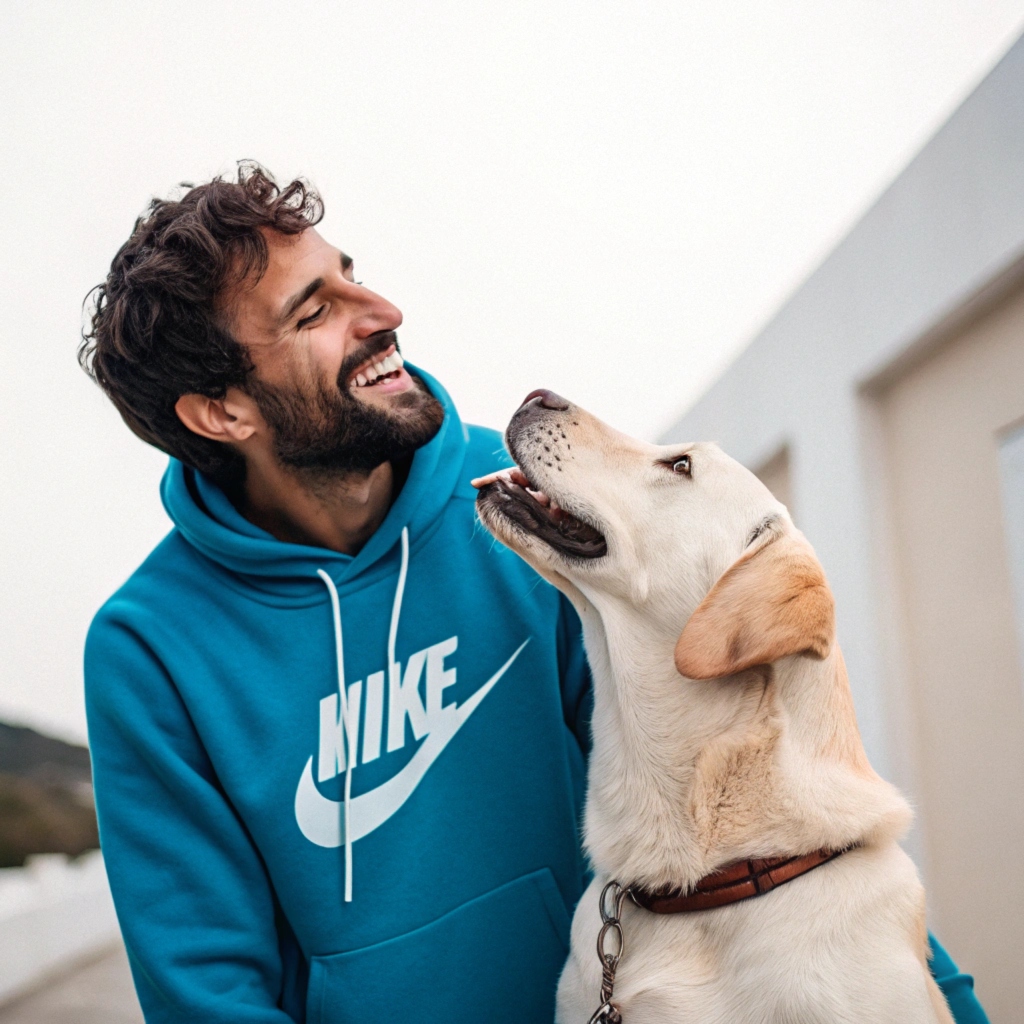
I’ve spent 10+ years in dog training, digging into what makes dogs (and their humans) tick. At Smart Dog Learning, I share my no-nonsense, fun approach to training so you can enjoy life with a well-behaved, happy pup—no boring lectures, just practical results 😉

